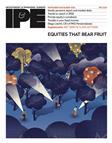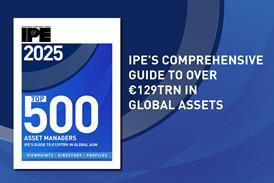Tactical Asset Allocation (TAA) involves tactically increasing a fund’s exposure to those markets that the TAA manager’s research indicates are relatively attractive and reducing its exposure to markets that are less attractive. The objective is to add value within specified risk constraints.
TAA is a form of active funds management. A key statistic used to measure active management skills is the information ratio. It measures how efficiently a manager can convert active risk into excess return, ie, alpha. The magnitude of the information ratio depends on manager skill and breadth, where breadth is the number of independent active portfolio positions.
The evolution of TAA has often been driven by the desire to increase breadth and improve the information ratio. For example, TAA has evolved from domestic TAA, which involves equity/bond/cash decisions within one country to global TAA (GTAA). GTAA involves creating a diversified portfolio of overweight and underweight positions typically covering up to 15 equity markets, up to 10 bond markets, and up to 10 currencies.
TAA has also evolved in terms of how it is implemented. Decisions covering equities, bonds, and currencies are now usually implemented using futures and forward rate contracts. These derivative contracts provide a cost effective and timely method of implementing strategy. This method also avoids the disruption to underlying asset class managers that occurs if a TAA strategy is implemented in the physical market.
The current evolution for TAA is a shift to maximise the absolute risk-adjusted return that it can generate and to minimise the assets required to fund the TAA programmes. These changes include a shift in the choice of benchmark, in how range constraints are set, and in the investment vehicles used.
However, the objective of adding value by increasing a fund’s exposure to those markets that are relatively attractive and reducing its exposure to markets that are less attractive is unchanged.
TAA traditionally has been thought of as part of a balanced fund structure. In that structure, the TAA benchmark is the benchmark of the fund. The TAA manager limits their activity to just those assets that are in the fund’s benchmark. Risk is assessed in terms of deviations from the fund’s benchmark.
In a global macro managed account style of TAA, the benchmark is cash. Risk is assessed relative to cash, ie, the focus is on absolute returns. The TAA manager will include all the assets for which they have skill at forecasting. This will lead to an increase in breadth and a generally more stable value added process for the client.
Range constraints
An important decision is the allowable deviation from benchmark, ie, what TAA ranges to use.
Should ranges be wide or narrow? The width of the ranges is usually an indication of the degree of aggression, or active risk, expected by the fund of the TAA manager, narrow ranges being conservative and wide ranges being aggressive.
In the traditional approach to TAA, it is usual to have net-short-sell constraints. These are constraints imposed to prevent a TAA manager from going short in a position beyond the physical allocation to that market. For example, if a fund has 2% in Japanese bonds then the TAA manager can short sell only 2% in Japanese bonds even if the TAA strategy wanted to sell more and was permitted to sell more than 2% in other markets. Such constraints will result in asymmetric strategies and detract from the risk-adjusted performance of the TAA strategy.
In the global macro managed account approach to TAA, the benchmark is cash so there are no references to the underlying benchmark and no net-short-sell constraints. As a result, breadth is enhanced by setting ranges that allows the TAA manager to take symmetric long and short positions. Ranges are expressed as a maximum leverage allowed relative to the cash invested in the TAA strategy.
Should funds even specify range constraints? It may be better to specify an overall aggregate active risk constraint. However, ranges can be a useful device in equalising the contributions of the various active positions to the overall profitability of the TAA strategy. A range constraint will put a hard limit on the extent to which the manager can take a position in any one market or combinations of markets.
The investment vehicles that used to deliver TAA active management have evolved from inefficient traditional TAA funds, to TAA overlays, and now to TAA global macro managed accounts.
The traditional TAA fund or trust is a balanced fund with very wide ranges. It is usually designed so that an investment of 20% of the client’s total portfolio will result in meaningful TAA positions at the portfolio level. The client can achieve their desired portfolio benchmark by investing the other 80% with specialist managers, taking into account the benchmark of the TAA fund. TAA funds are usually invested in index funds and implement TAA strategy using futures and forward rate contracts.
Traditional TAA funds are inefficient in that the bulk of their assets are invested passively in index funds. It would be more efficient if the client only gave the TAA manager sufficient assets to support the futures and forward foreign exchange trading activity that contributes to the alpha. The client could then invest the other assets with other managers as best suited their requirements.
TAA overlays
A TAA overlay is efficient in that the client only gives the TAA manager sufficient assets to fund the futures and forward foreign exchange trading activity that contributes to the TAA alpha. The amount of the assets required will vary according to the return objective of the mandate. A typical TAA mandate with an objective of 75 basis points value added per annum, would require around 4% of the client’s total portfolio to cover the margin requirements of futures contracts and forward rate agreements.
A TAA overlay is tailored to the client. It takes into account the client’s specifications of TAA range constraints and any joint constraints. No two overlays will be identical, except by chance.
A common weakness of traditional TAA overlays has been the use of net-short-sell constraints. The next evolution that retains all the efficiencies of overlays but improves the breadth of the investment process are TAA global macro managed accounts.
A TAA global macro managed account is an absolute return vehicle, again investing in global equity, bond and currency markets. In this case the net-short-sell constraint is omitted, allowing a symmetrical approach to long and short positions. As a result, we are able to achieve risk-adjusted returns superior to those of the typical overlay. In addition, the number of markets covered in the TAA global macro managed account can be greater than in the typical overlay. Depending on the TAA manager’s skill levels in the additional markets, this can increase the information ratio generated by the TAA strategy.
The minimum amount required to run a TAA global macro managed account depends on the target return objective of the account. As a guide, a minimum of approximately $5m (E5m) would be required to run a TAA global macro managed account with a return target of 20% per annum. The impact that investing in the TAA account has on the overall return to the investor’s portfolio depends on the share of the portfolio that is invested. For example, to achieve 75 basis points at the portfolio level, the client would need to invest 3.75% of their assets (ie, 0.75% = 20% x 3.75%).
The 3.75% funding requirement does not mean that a TAA managed account can be applied only to portfolios with a cash benchmark weights of 3.75% or more. For example, a portfolio may have a zero benchmark in cash and fund TAA out of fixed interest. The TAA manager can then convert the 3.75% cash back into fixed interest using futures contracts.
This approach can be applied on a client-specific basis, with the client specifying the risk-return characteristics of the account and/or specifying range constraints. But it is also conducive to a pooled-vehicle approach. A TAA pooled global macro fund would be especially well suited for small funds.
The lumpiness of futures contracts makes the precise implementation of TAA strategy difficult for small funds. By pooling, a TAA global macro fund can become large enough for the TAA strategy to be implemented in a more precise manner.
The evolution to a global macro managed account style of TAA maximises the absolute risk-adjusted return generation capabilities of TAA and minimises the assets required to fund these TAA programmes. The key differences between the traditional approaches to TAA and the new approach to TAA are summarised in the table.
Peter Higgs is managing director of Tactical Global Management (UK) in London














No comments yet